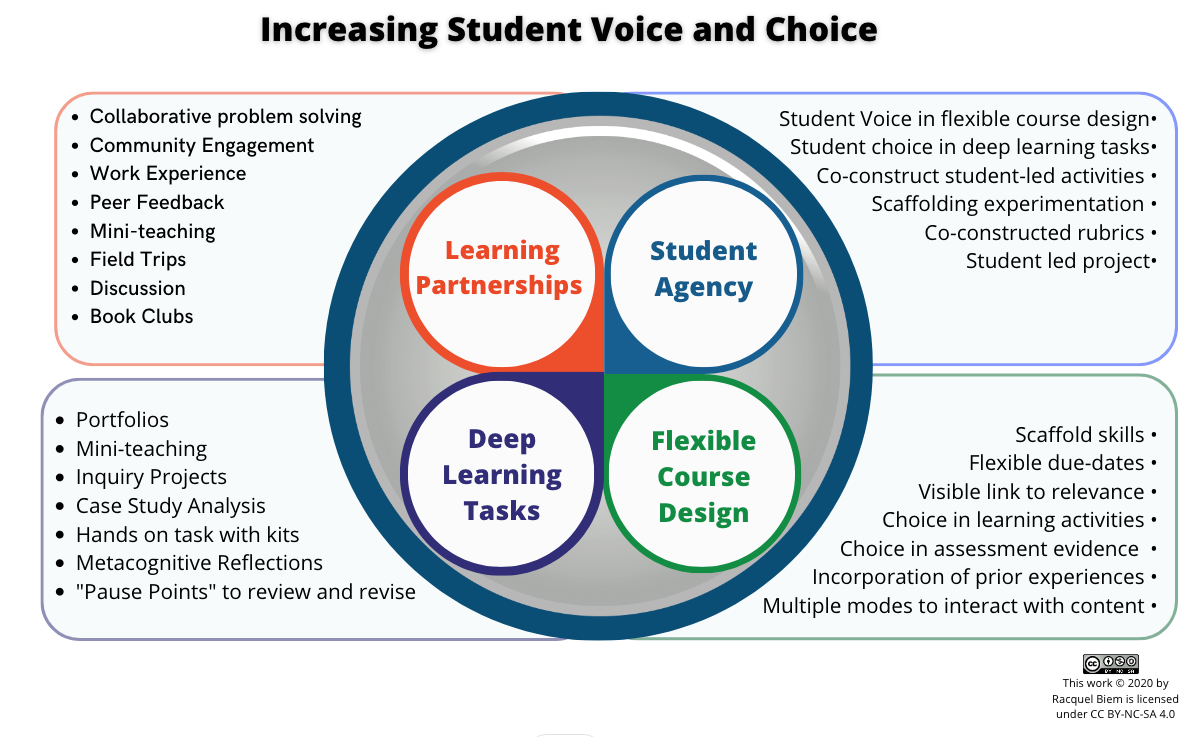Variations on Think Pair Share
If you aren’t familiar with it, the think pair share is a versatile activity that can be done in many creative ways during a class. It combines discussion with an application of course content, while providing think time for problem-solving and/or reflection.
- Think: ask an engaging question or pose an interesting problem; students are given a minute to think about or write down their responses
- Pair: Students share responses with each other and re-evaluate
- Share: Instructor facilitates a debrief where responses (or a portion of responses, depending on time) are shared with the whole class
In the Formulate Share Listen Create model, students formulate a question rather than respond to a question posed by the instructor. As they share their question with a peer, they must also listen carefully to the question that their peer has crafted, noting similarities and differences in the questions. As a team, the student pair creates a new question that incorporates the best of both responses. The instructor then debriefs with the whole class, similar to the think pair share.
Johnson, D.W., Johnson, R.T., and Smith, K.A. (1991). Active learning: Cooperation in the college classroom. Dina, MN: Interaction Book Company.


4 Comments
Liv Marken
This is really helpful…I use Think Pair Share quite a bit in my classes, and I think the students would appreciate me mixing it up a bit..
Kim West
Thanks… I am glad to hear this is helpful. I’m quite excited to try it myself too since I’ve been using the traditional think pair share for a long time as well. I think it might work really well in science where constructing a scientific hypothesis (which is essentially a question) is an important skill for students to learn and practice how to do.
Mohammed Abdulai
Thank you for sharing this very helpful active learning strategy. I find it very helpful as a graduate research and teaching assistant.
Kim
You are most welcome, Mohammed. I’m glad you find it useful, and hope you have the chance to try it out.